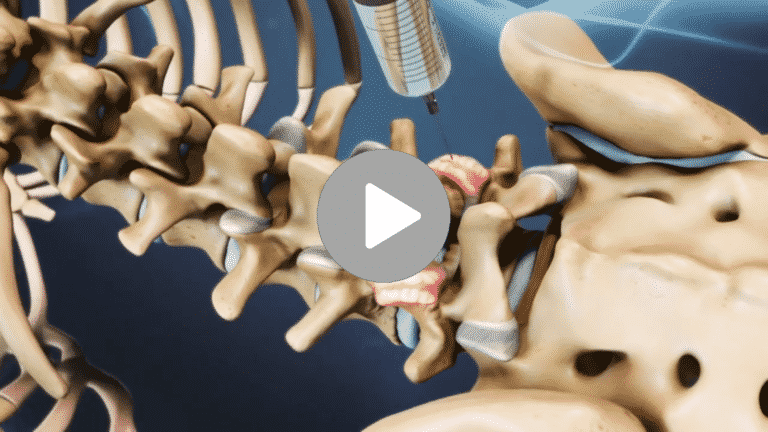Facet Joint Injection
Facet joints are small joints at each segment of the spine that provide stability and help guide motion. The facet joints can become painful due to arthritis of the spine, a back injury, or mechanical stress to the back.
A cervical, thoracic or lumbar facet joint injection involves injecting a small amount of local anesthetic (numbing agent) and/or steroid medication, which can anesthetize the facet joints and block the pain. The pain relief from a facet joint injection is intended to help a patient better tolerate a physical therapy routine to rehabilitate his or her injury or back condition.
Facet Joint Injection Pain Relief Goals
Facet joint injections usually have two goals: to help diagnose the cause and location of pain and also to provide effective pain management:
Diagnostic goals: By placing numbing medicine into the facet joint, the amount of immediate pain relief experienced by the patient will help determine if the facet joint is a source of pain. If complete pain relief is achieved while the facet joint is numb, it means that joint is likely a source of pain.
Pain relief goals: Along with the numbing medication, a facet joint injection also includes injecting time-release steroid (cortisone) into the facet joint to reduce inflammation, which can sometimes provide longer-term pain relief.

Facet Joint Injections Reviews
Facet joints that are the source of your pain will get an immediate pain relief after a facet joint injection. You will also have a longer lasting pain relief between 2 and 5 days after the procedure. If the facet block procedure helps with back pain, you can consider the procedure up to 3 times a year as needed. When you’re reviewing facet joint injections it’s important to consider this option compared to other alternatives. Oral pain relief is often prescribed for back and neck pain, but it can be addictive and when tolerance kicks in the effectiveness will be reduced. If you’re on other medications, this can be problematic as well, since mixing different medications can have adverse side effects.
What Next if Facet Joint Injections Don’t Work?
Facet joints are meant to support the spine and help it move, though if facet joint injections are needed then they are causing pain from pressure on the nerves in that spinal area. Facet joint injections are used to test whether or not these joints are the cause of pain you’re experiencing, since they may not show up on an MRI, or CT scan. If the facet joint injections don’t work, then further testing to find what is causing your pain will ensue. If it’s an injury to the muscles in the back, physical therapy may be the solution. Bloodwork or nerve studies are follow-up tests to analyze other causes. Epidural injections can be used to figure out where the pain is coming from. And medications like muscle relaxants can help manage the pain as needed. If none of the other procedures are working, then surgery can be an option.
Can Facet Joint Injections Make My Pain Worse?
One of the risks of facet joint injections is worse pain after the procedure. Why is pain worse after facet joint injections if they’re meant to treat it though? In some patients the injection causes the back muscles to spasm, which can cause pain. The pain is temporary though and only lasts a few hours to a few days before going away completely. If the pain at the injection site lasts more than a couple days you should talk to your doctor as this could be a sign of injection.
Facet Joint Injection Side Effects
Facet joint injection side effects are generally low, and the risks are rare, though with all medical procedures there are some complications that may occur. Bleeding can happen as a rare complication, but usually for patients on blood thinners or with a disorder. Minor infection can happen, usually in 1-2% of injections, but your doctor will follow proper sterilization procedures to minimize this risk as much as possible. Allergic reactions to X-ray contrast or the steroid may happen, and very rarely to the local anesthetic. There may also be discomfort at the injection site or a worsening of pain symptoms. These are usually mild and short lived.
Facet Joint Injections Recovery Time
After a facet joint injection you should limit rigorous activity. Don’t drink alcohol or do any activities that may strain your back or body for the first day. Keeping a journal to record pain relief levels experienced during the first week helps your physician assess the results accurately and determine what next to do in terms of treatment if needed. You should keep the injection site clean and dry and alert your doctor if anything looks unusual such as an infection or a fever breaks out. As the pain relief starts taking effect you can add non-strenuous activities into your day and slowly strengthen your back muscles.



